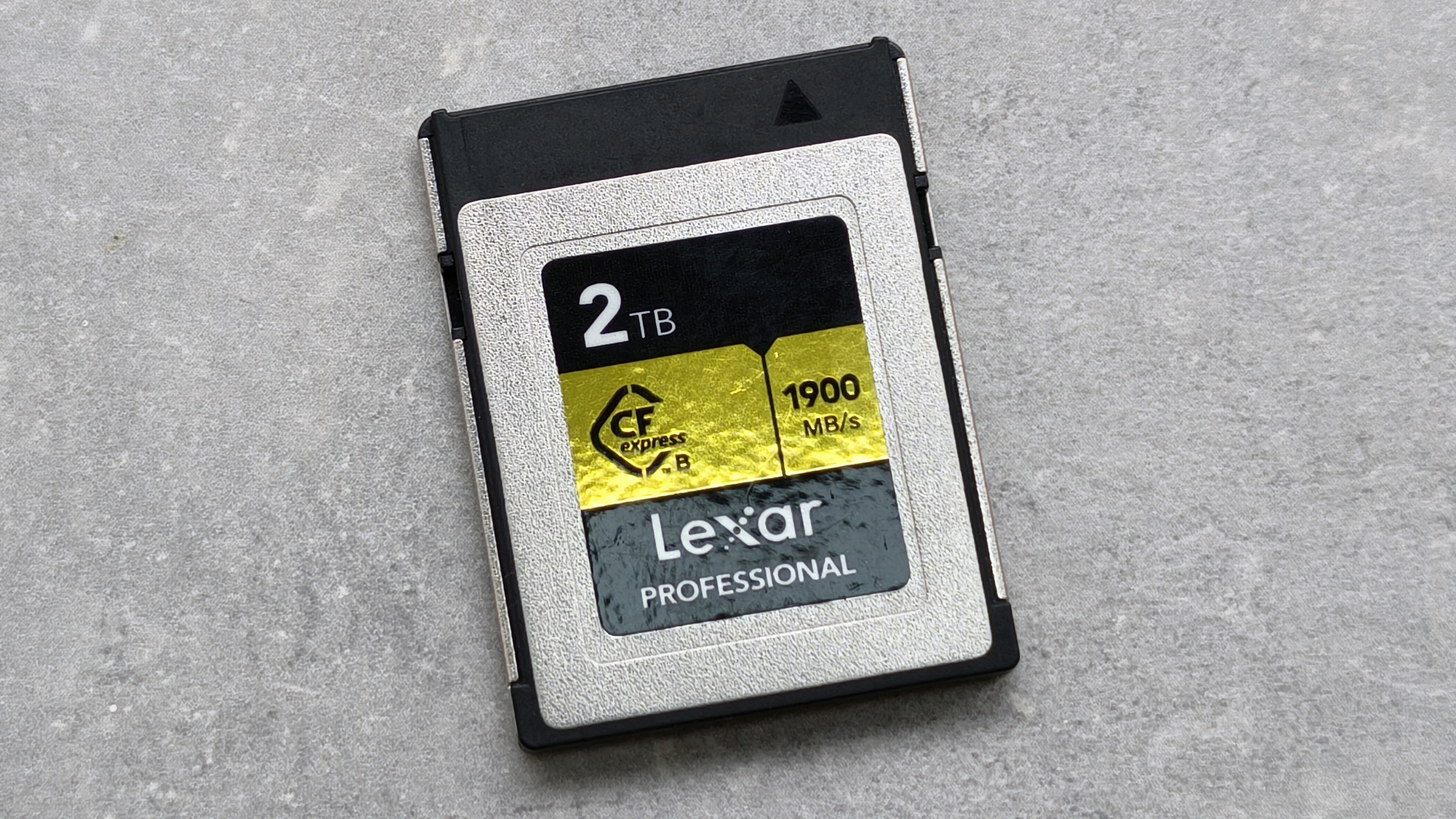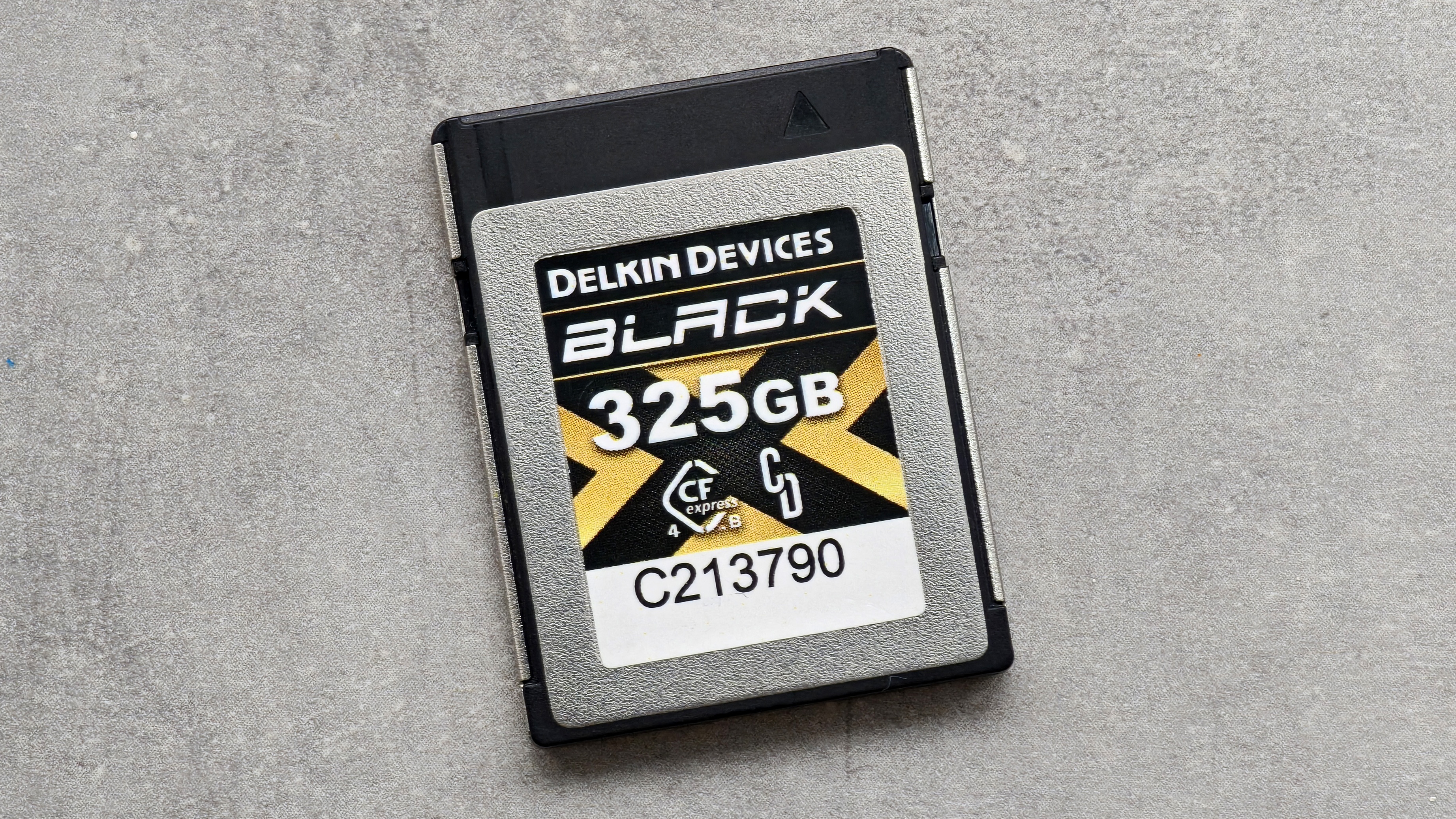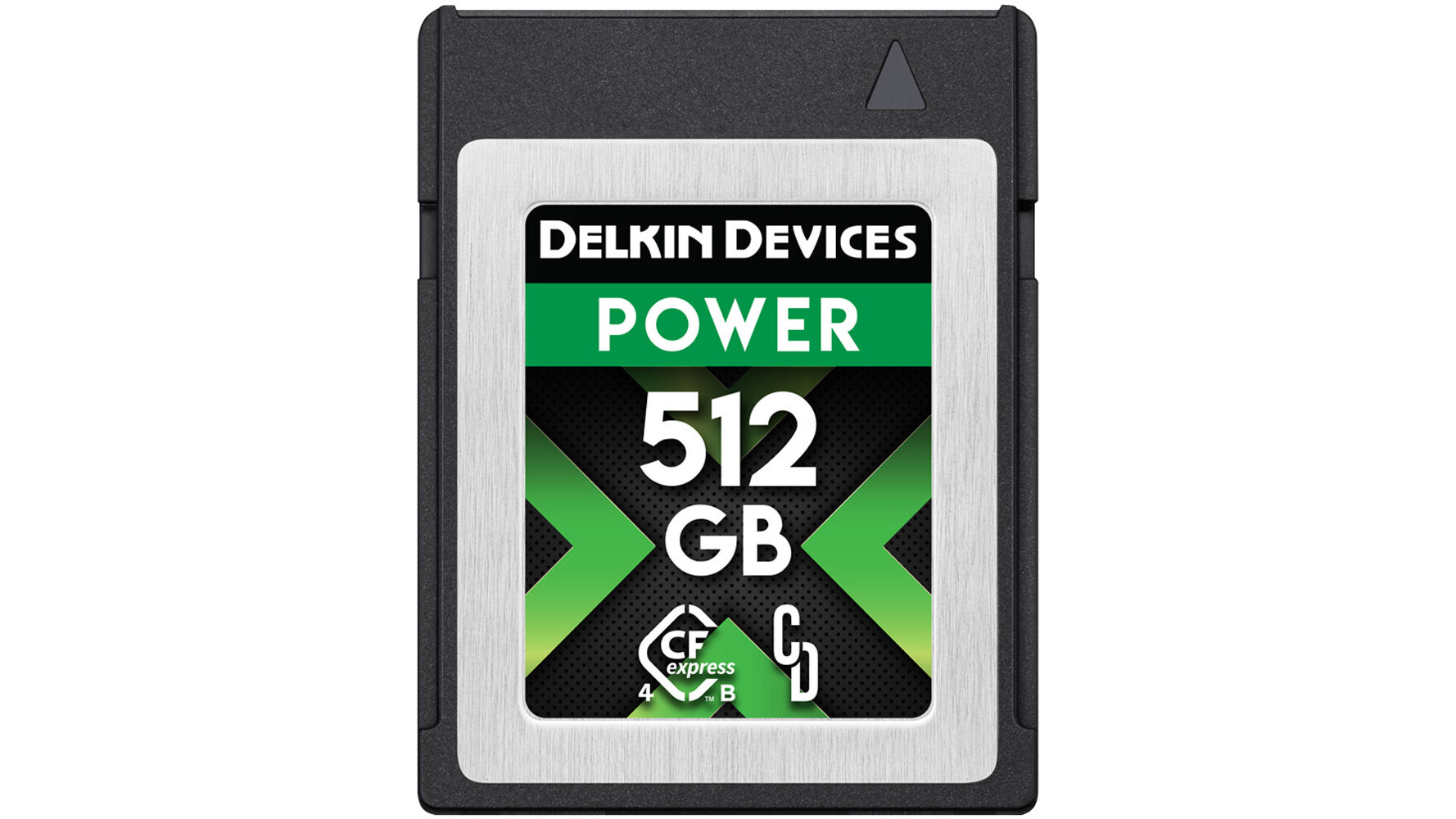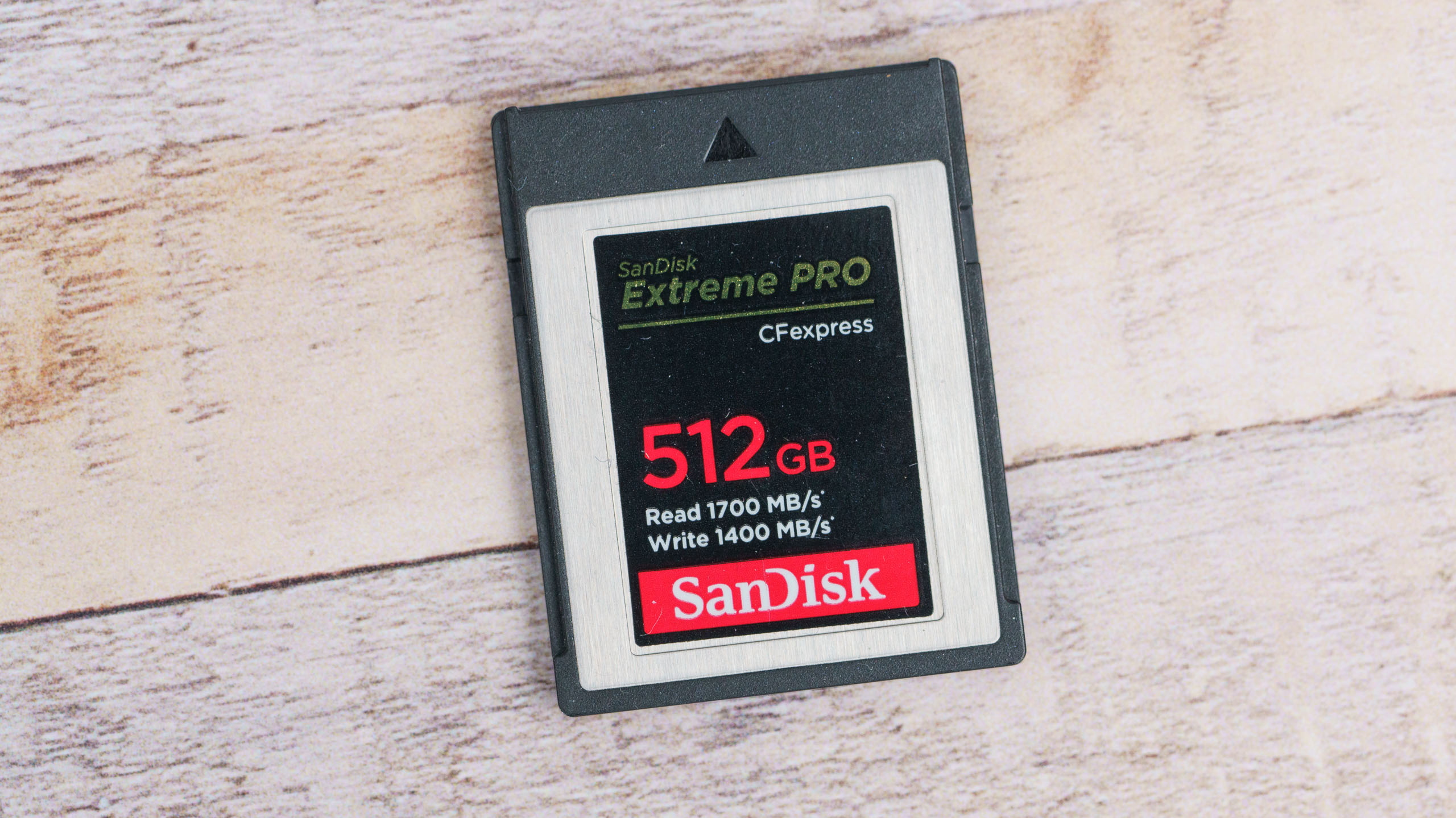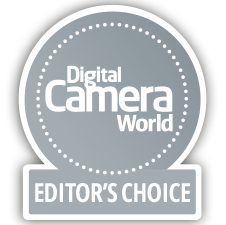The best CFexpress cards: ultra-fast Type B and Type A cards compared
The best CFexpress cards are some of the fastest memory cards you can buy. Here are our top Type B and Type A picks
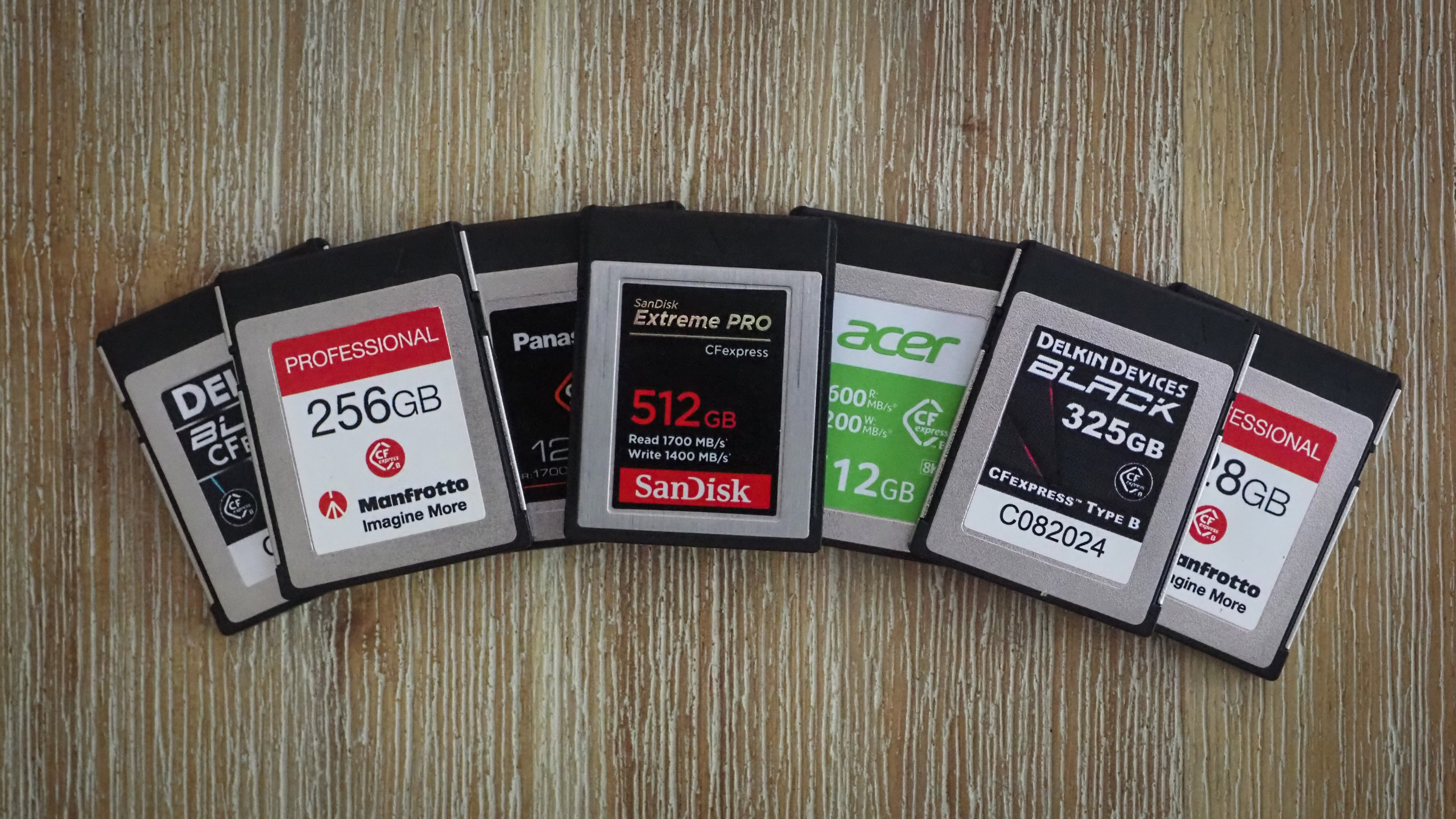
CFexpress is now the memory card format of choice for professional cameras, as the best CFexpress cards are significantly faster than even UHS-II SD cards. Evolving from the now-obsolete XQD card format, CFexpress Type B cards share the same outer design as XQD cards, but pack faster memory inside, making them some of the fastest memory cards available today.
Almost all cameras that originally supported XQD cards have now been firmware-updated to also work with CFexpress Type B cards, so cameras like the original Nikon Z6 and Z7 are no longer restricted to XQD cards alone.
Sony has muddied the CFexpress waters by bring to market CFexpress Type A cards (yes, A comes before B, yet we got Type B cards first - confusing, isn't it!). The Type A CFexpress card variant is physically smaller than Type B, and therefore you can't use a Type A card in a camera designed for XQD/CFexpress Type B cards. You wouldn't really want to though, as the drawback of CFexpress Type A's compactness is a reduction in read/write speed, compared to Type B cards of an equivalent generation.
And generations matter. The first CFexpress Type B and A cards were version 2.0. The latest generation is 4.0 (there was no 3.0) - CFexpress 4.0 cards are TWICE as fast as version 2.0, both for Type A and B cards. It means CFexpress 4.0 Type A cards can now match the speed of the original Type B 2.0 cards (around 1900MB/s), while a Type B 4.0 card is capable of speeds of up to 3800MB/s - incredible!
Here we're listing the best CFexpress Type B and Type A cards available right now. Don't expect to find any cheap bargain buys like you can with SD cards - CFexpress is still a premium card format, and therefore commands premium prices. But you can rest easy knowing all the cards on this list offer top-notch performance and will do justice to your camera.

Ben is the Imaging Labs manager, responsible for all the testing on Digital Camera World and across the entire photography portfolio at Future. Whether he's in the lab testing the sharpness of new lenses, the resolution of the latest image sensors, the zoom range of monster bridge cameras or checking the performance of a memory card, Ben is our go-to guy for technical insight. He's a human encyclopedia of benchmarks when it comes to recommending the best buys.
The Quick List
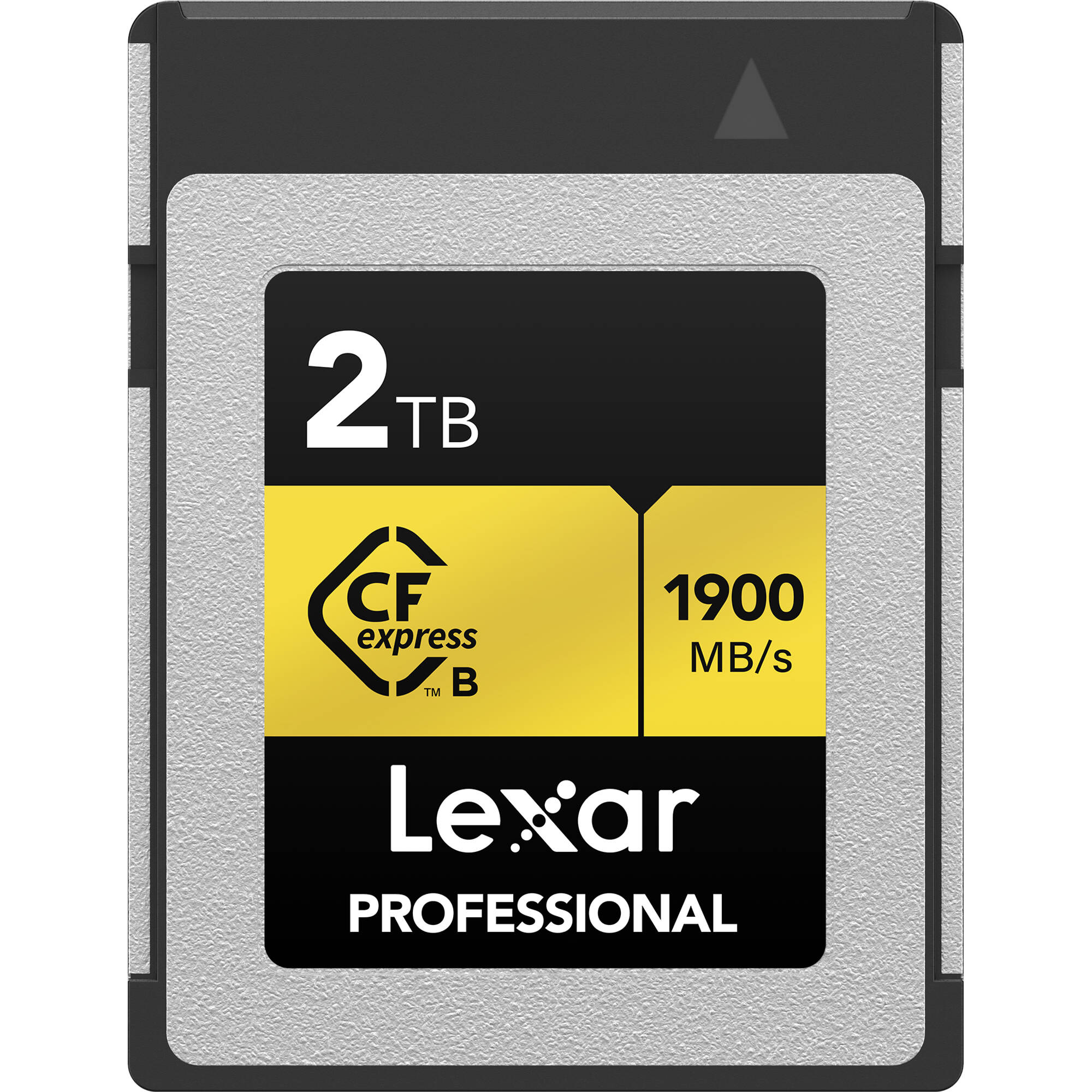
It's quick, well priced, comes in plenty of capacities and is easy to find. There are faster cards out there, but this is the one that's best for most people.
Read more below...
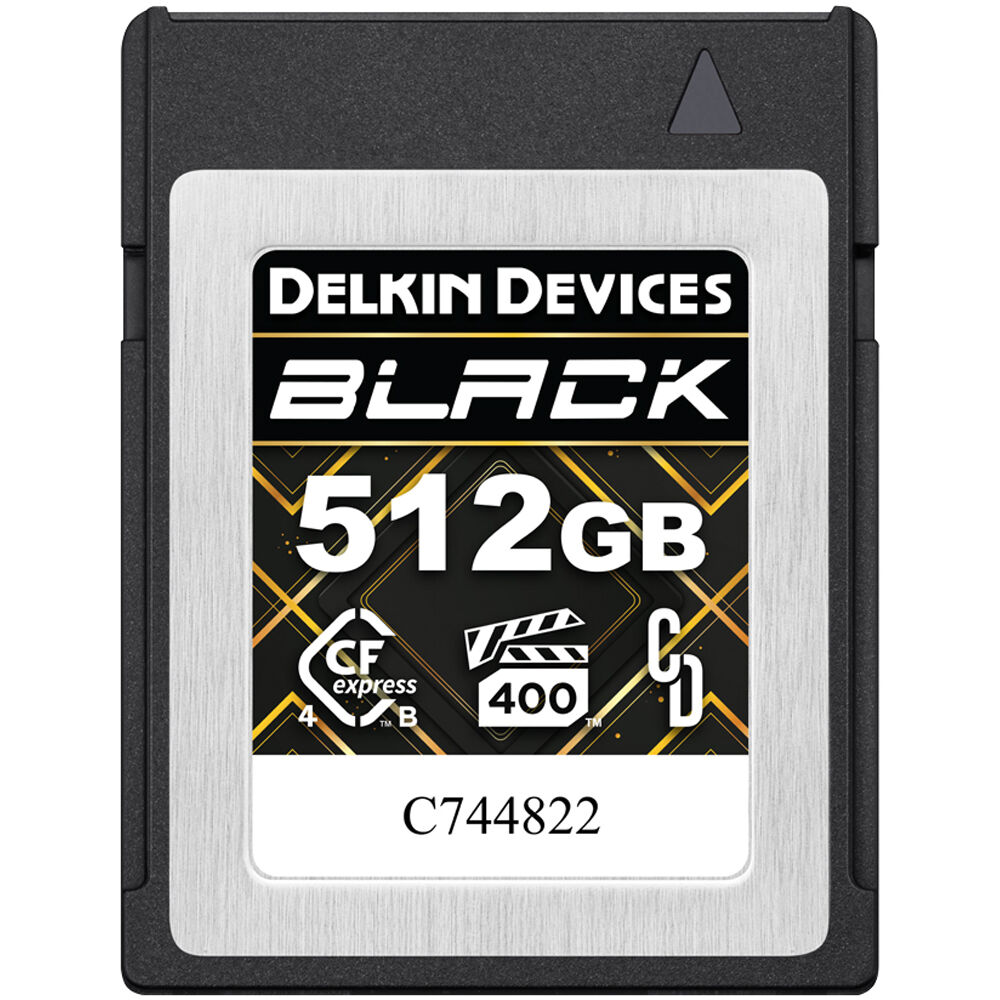
With a maximum read speed of up to 3600MB/s and write speeds approaching 3200MB/s, there's nothing this card cant cope with.
Read more below...
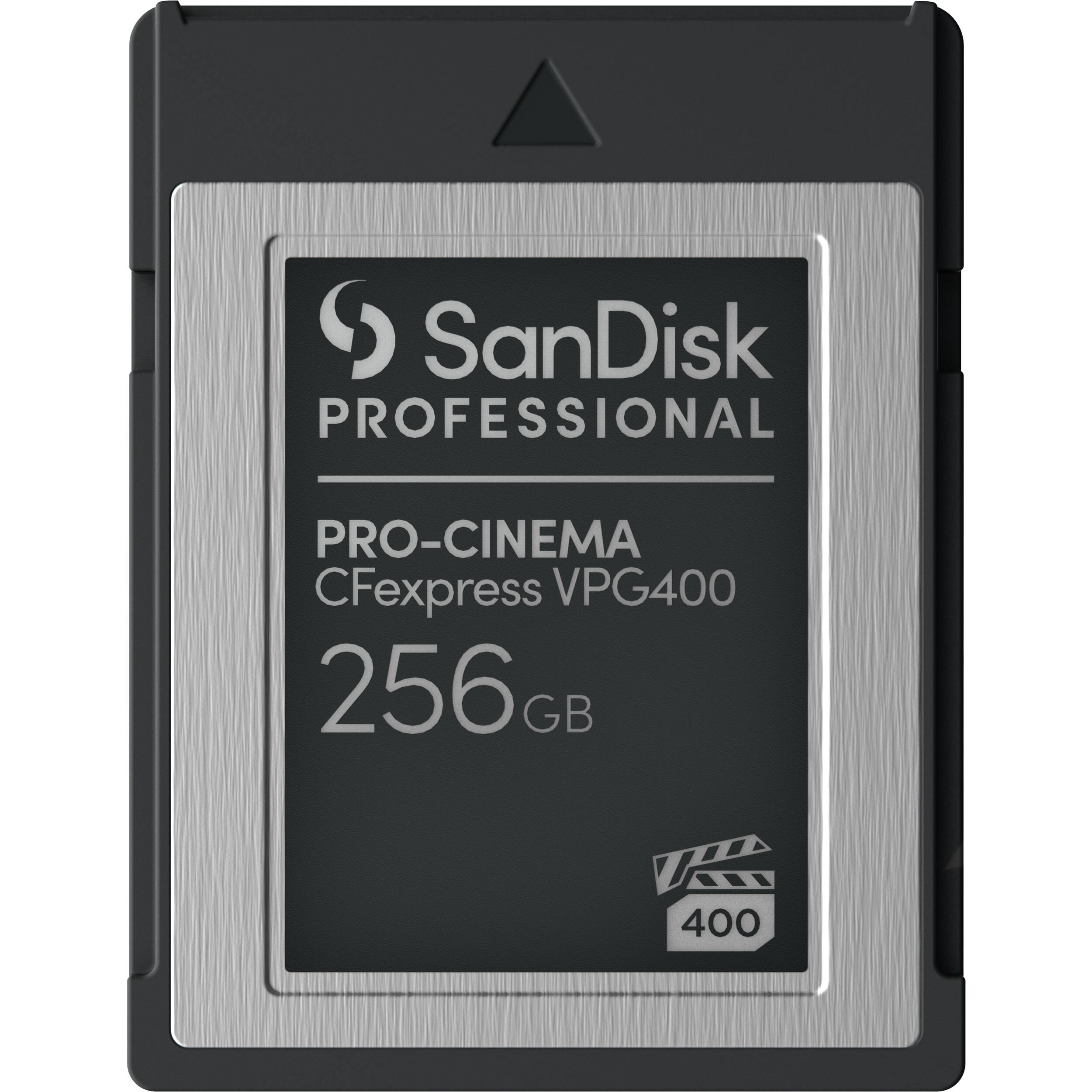
With it's super-high minimum write speed, this Type B card guarantees smooth 4K and even 8K video recording.
Read more below...

Despite costing significantly less than most rivals, this Delkin POWER 4.0 card is still super-speedy. What's not to like?
Read more below...
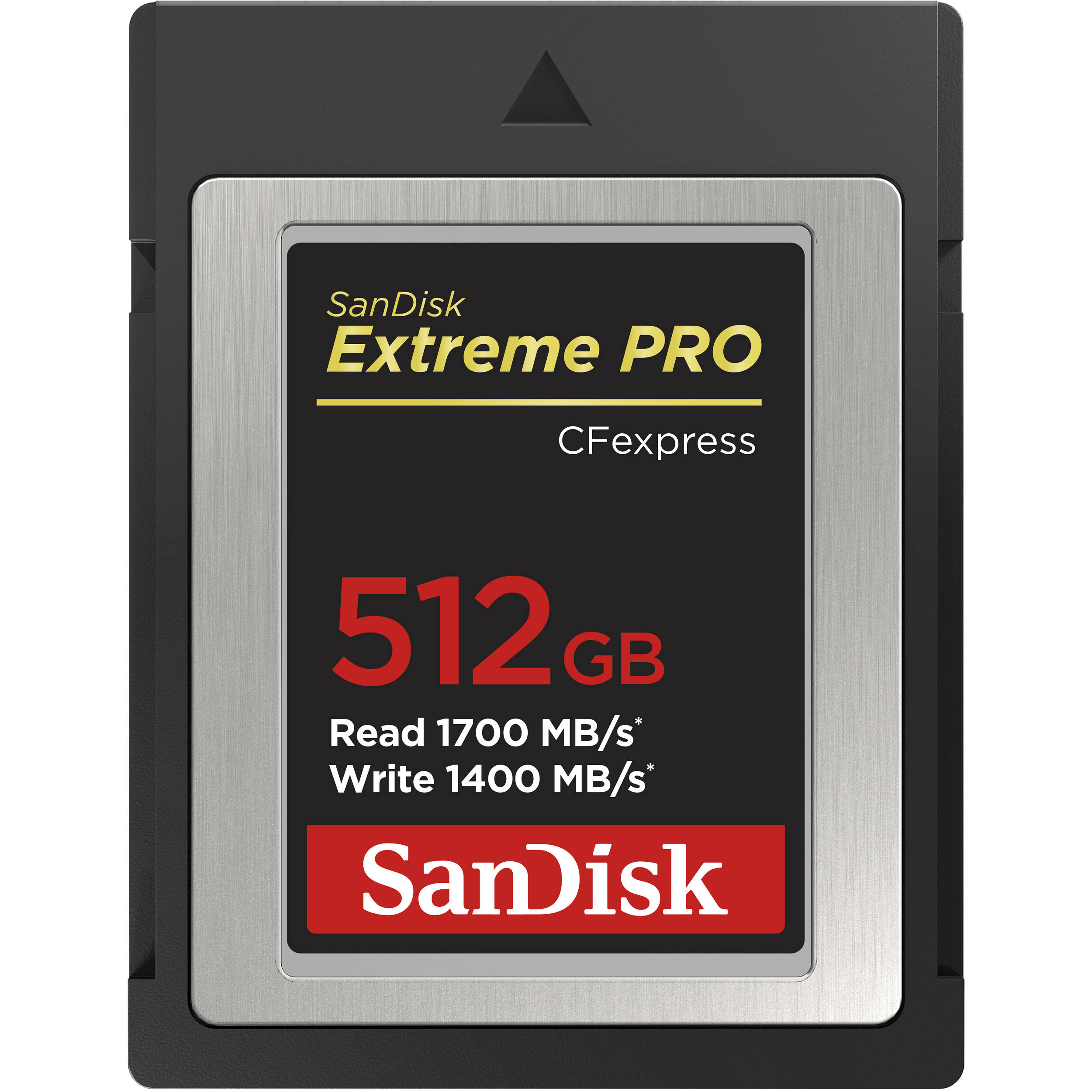
Fast, well-priced, and with a good range of capacities: this Type B card has it all. Go for the 512GB capacity to get the best value.
Read more below...
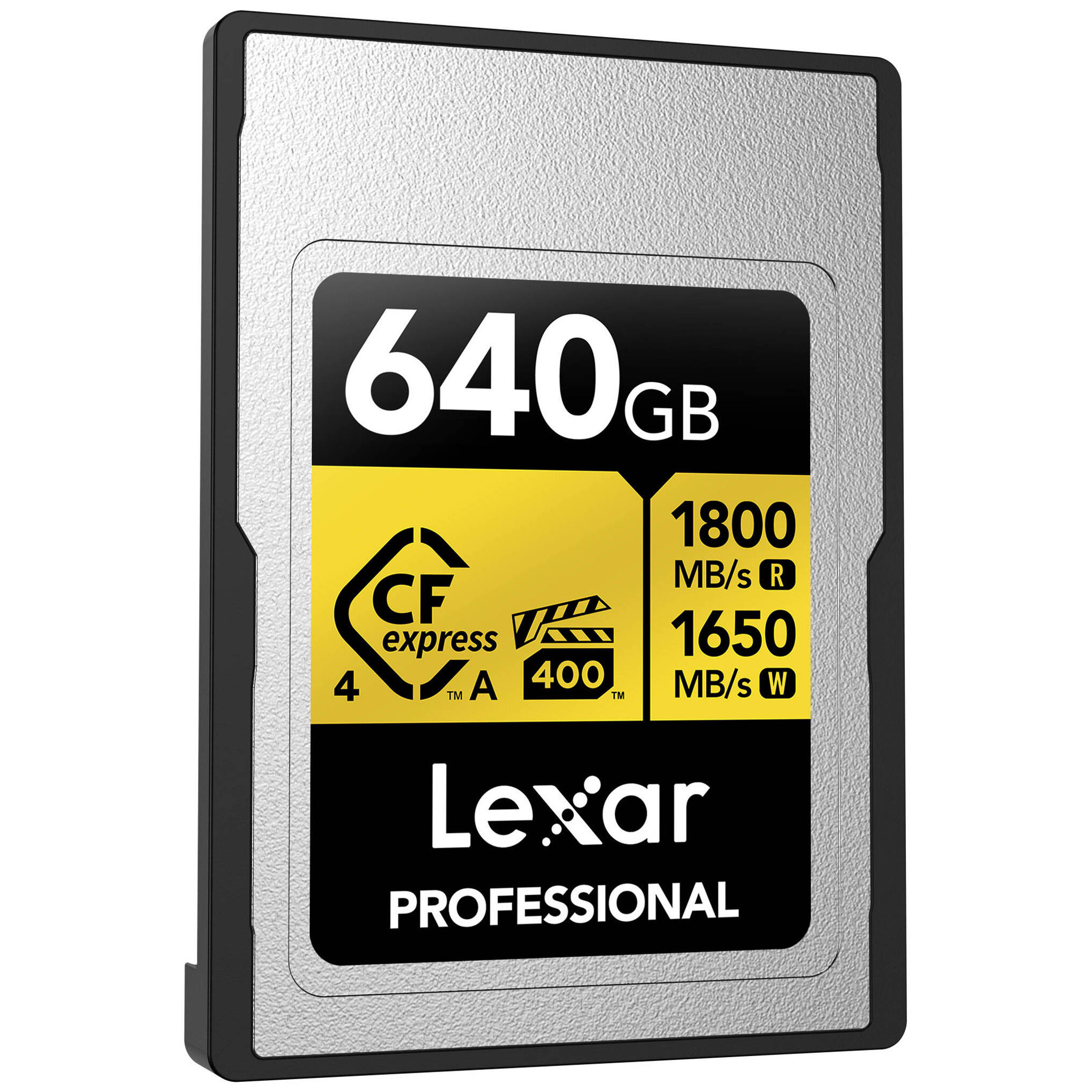
There are now plenty of Type A cards out there, but we reckon this fast, high-capacity Lexar card is the best of the bunch.
Read more below...
The best CFexpress cards
Why you can trust Digital Camera World
Best overall
Specifications
Reasons to buy
Reasons to avoid
✅ You want a decent all-round performer: Super-fast read speeds and loads of available capacities make this Lexar card a smart buy.
❌ You want bleeding-edge speed: Next-gen CFexpress 4.0 cards are considerably faster, but this card will be quick enough for the vast majority of use cases.
Lexar Professional CFexpress GOLD Series Type B cards can be had in capacities from 128GB all the way up to 2TB. The 128GB-512GB versions boast speed ratings of up to 1750MB/s read and 1500MB/s write, while the top 1TB and 2TB cards have a slightly higher max read speed of 1900MB/s. These two top-end cards also have a higher minimum sustained write speed of 1300MB/s, whereas the 512GB and lower capacities are only rated for 1000MB/s sustained write.
It's worth noting that there are now plenty of next-gen CFexpress 4.0 cards that boasts speeds of over 3500MB/s, making this Lexar card look 'slow' by comparison. However unless you're shooting 8K or 12K RAW video, you simply won't need that extra speed. It makes more sense to spend the same cash on a higher capacity Lexar Gold card instead.
Read our full Lexar Professional CFexpress Type-B Card review
Lab results | Score | Rating |
|---|---|---|
Read speed | 1691MB/s | ★★★★ |
Write speed | 1388MB/s | ★★★★ |
Best for speed
Specifications
Reasons to buy
Reasons to avoid
✅ You want peace of mind: Delkin's warranty and card replacement policy is superb - great if you're working on mission-critical content.
❌ You want ultimate bang per buck: Dellin's Power 4.0 Type B cards are almost as quick as the Black series, but a lot less expensive. You pay a hefty premium for top performance.
Delkin Device’s Black CFexpress Type B 4.0 cards are a bit more expensive than some of the competition, but if one should fail, a replacement card is promised within 48 hours, without you first needing to return the faulty card - reassuring.
Performance slightly varies depending on the capacity you choose, but all are capable of maximum transfer speeds of at least 3530MB/s read and 3200MB/s write. A minimum sustained write speed of over 2000MB/s also makes Delkin Black cards ideal for 8K, 6K and 4K raw video recording.
The latest Black-series cards (the 512GB, 1TB and 2TB versions) also boast VPG400 certification, meaning they're guaranteed to sustain at least 400MB/s when recording video, but the slightly older 3256GB, 650GB and 1.3TB capacities should also be similarly quick.
Read our full Delkin Devices Black CFexpress Type B 4.0 review
Lab results | Score | Rating |
|---|---|---|
Read speed | 2562MB/s | ★★★★★ |
Write speed | 1695MB/s | ★★★★★ |
Best for video
Specifications
Reasons to buy
Reasons to avoid
✅ You shoot 4K or 8k video: This card is built for sustained speed, making it ideal for long video shoots
❌ You want a very high capacity: Capacities top out at 640GB, which can fill up when shooting 8K video
Though headline maximum read and write speeds may not be class leading, the Pro-Cinema card is all about reliably high performance, not occasional one-off bursts. Consequently this is a card that promises a minimum sustained write rate of 1400MB/s, making it ideal for recording 8K, high bit-rate video for long periods. Pro-Cinema cards are also built to last, with drop and crush resistance.
We were impressed to find our Pro-Cinema review sample card performed almost exactly as advertised when we tested it, turning in excellent read and write speeds in software benchmarks, and shrugging off anything we could throw at it in real-world testing.
This is far from the cheapest Type B card out there, but if you need a card you can depend on, it's a great buy.
Read our full SanDisk Pro-Cinema CFexpress Type B card review
Lab results | Score | Rating |
|---|---|---|
Read speed | 1647MB/s | ★★★★★ |
Write speed | 1442MB/s | ★★★★★ |
Best budget
4. Delkin Devices POWER 4.0 CFexpress Type B
Specifications
Reasons to buy
✅ You want great value: This card offers stunning performance for the money, with a choice of high capacity options.
❌ You want the fastest sustained write speed: Sustained write speed isn't great for the 512GB capacity version, and the larger capacities could be quicker.
Recently we've seen a spread of accessibly-priced Type B cards hit the market, but Delkin's latest POWER 4.0 Type B card is the pick of the bunch. Unlike some budget cards, it conforms to the CFexpress 4.0 standard, making it twice as fast as first-gen Type B cards, with a blistering max write speed of 3240MB/s. While most people won't need that extra speed, you might as well have it here, as this card is no more expensive per gigabyte than budget CFexpress 2.0 cards.
Three capacity options are available: 512GB, 1TB and 2TB. All are competitively priced, though the 512GB capacity can 'only' manage a relatively slow 820MB sustained write speed. The 1TB and 2TB capacities are capable of over 1400MB/s sustained write rate. While that's not the fastest available, it is definitely quick enough for almost any shooting requirement.
Easily available
Specifications
Reasons to buy
Reasons to avoid
✅ You want to bag a bargain: These SanDisk cards are widely available and are often discounted, making them great value.
❌ You want a lower capacity version: Only the 512GB card is capable of the highest speeds. All the lower capacity cards are slower, and the 64GB version significantly so.
Available in 64-512GB capacities, SanDisk's Extreme Pro CFexpress Type B card offers respectable performance and a fair price. Read speeds top out at an impressive 1700MB/s, and write rates a decent 1400MB/s - comfortably quick enough to record even 8K video.
These speeds only apply to the top 512GB card, but this is by far the best value capacity to buy anyway, costing little more than the 256GB version. Go for the 256GB or 128GB versions and peak write speeds drop to 1200MB/s, though this is still plenty fast enough for most scenarios. You'd be wise to avoid the base 64GB card, as it is only rated for 1500/800MB/s read/write speeds, and 64GB is simply not enough for shooting high-res video.
While this SanDisk card doesn't break any speed records, it is available pretty much anywhere, so if one of the other cards on this list isn't sold near you, this one could be a safe bet.
Read our full SanDisk Extreme PRO CFexpress Card Type B review
Lab results | Score | Rating |
|---|---|---|
Read speed | 907MB/s (USB bottlenecked) | ★★★ |
Write speed | 789MB/s (USB bottlenecked) | ★★★ |
Best Type A
Specifications
Reasons to buy
Reasons to avoid
✅ You want high capacity AND speed: This card has it all, and it's priced fairly for the performance on offer
❌ You're on a tight budget: This is a no-compromise card designed for demanding users. There are cheaper alternatives if you're willing to sacrifice some speed.
CFexpress Type A cards are predominantly used by high-end Sony cameras, but the Type A memory card market is rapidly expanding, with new cards regularly being launched.
This Lexar offering is built to the latest CFexpress 4.0 standard, so it's twice as fast as the first generation of Type A cards. That means read speeds of up to 1800MB/s, an impressive 1650MB/s max write speed, plus a 1400MB/s sustained write rate - just the ticket for smooth 8K video recording with a .
This Type A card is also built to last, being temperature-proof, vibration-resistant, IP68 dust- and water-proof, 5m drop-proof, shock-resistant, bend-resistant, and 150N pressure-proof.
Capacity options range from 256GB up to a whopping 2TB, though you'll only get the aforementioned 1400MB/s sustained write speed with the 640GB capacity or above - the 256GB and 512GB versions can 'only' manage 1000MB/s sustained write speed.
Read our full Lexar Professional GOLD CFexpress 4.0 Type A card review
Lab results | Score | Rating |
|---|---|---|
Read speed | 1688MB/s | ★★★★★ |
Write speed | 1545MB/s | ★★★★★ |
Best ultimate
7. Nextorage B2 Pro CFexpress 4.0 Type B card
Specifications
Reasons to buy
Reasons to avoid

✅ You want the absolute best: Huge speed, huge capacity - if only the best will do, look no further.
❌ You want good value: This is far beyond what today's cameras actually need from a Type B card - you're mostly paying for bragging rights.
CFexpress 4.0 cards are the next generation of CFexpress cards, and they're twice as fast as the cards we've come to know and love. And 4.0 cards literally don't get any faster than this! The B2 Pro from Nextorage is capable of blistering 3700MB/s rear and 3600MB/s write speeds. Sustained write speed - important when shooting high resolution video for prolonged periods - is also class-leading at 3400MB/s. All this is way faster than any camera actually requires though, even for 8K raw recording, but team this card with a suitable reader plus a fast computer and you can slash data transfer times . There are four available capacity options, so you can balance storage space with cost.
Speed comparison
Today's prices compared
The best camera deals, reviews, product advice, and unmissable photography news, direct to your inbox!
Ben is the Imaging Labs manager, responsible for all the testing on Digital Camera World and across the entire photography portfolio at Future. Whether he's in the lab testing the sharpness of new lenses, the resolution of the latest image sensors, the zoom range of monster bridge cameras or even the latest camera phones, Ben is our go-to guy for technical insight. He's also the team's man-at-arms when it comes to camera bags, filters, memory cards, and all manner of camera accessories – his lab is a bit like the Batcave of photography! With years of experience trialling and testing kit, he's a human encyclopedia of benchmarks when it comes to recommending the best buys.
